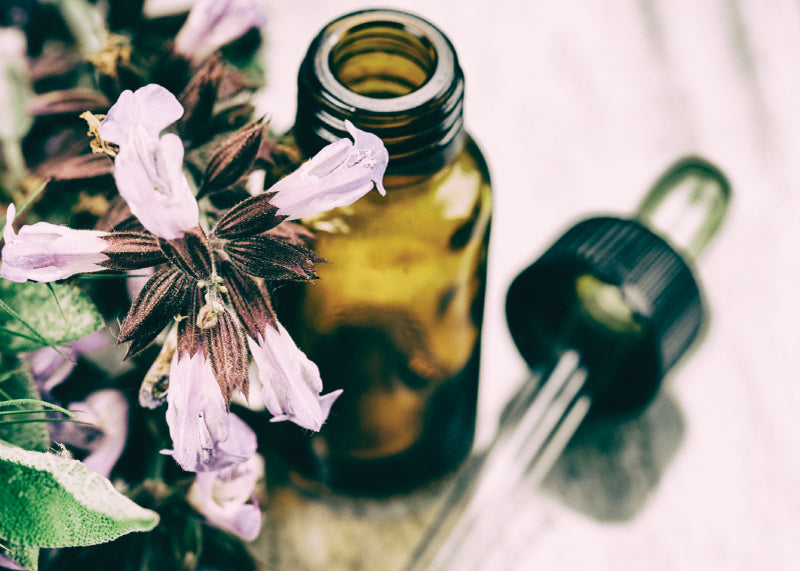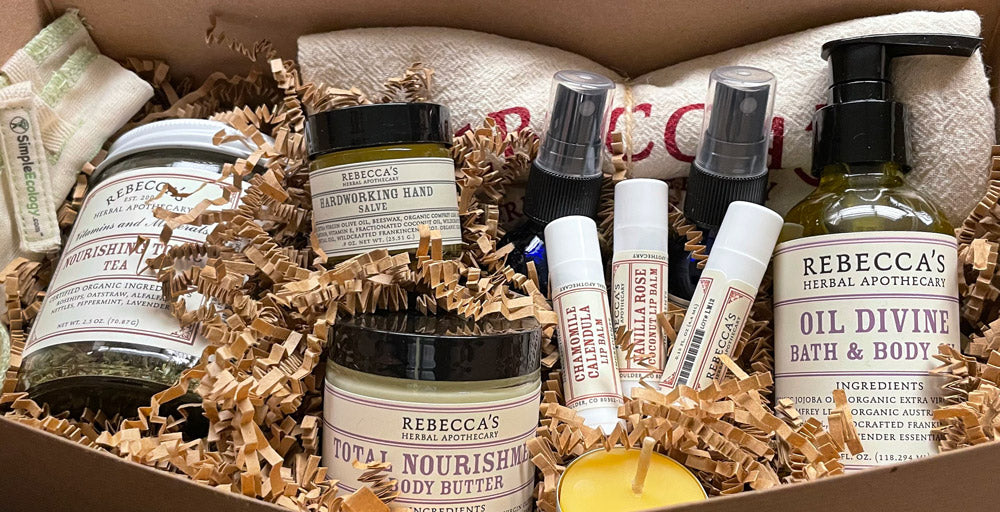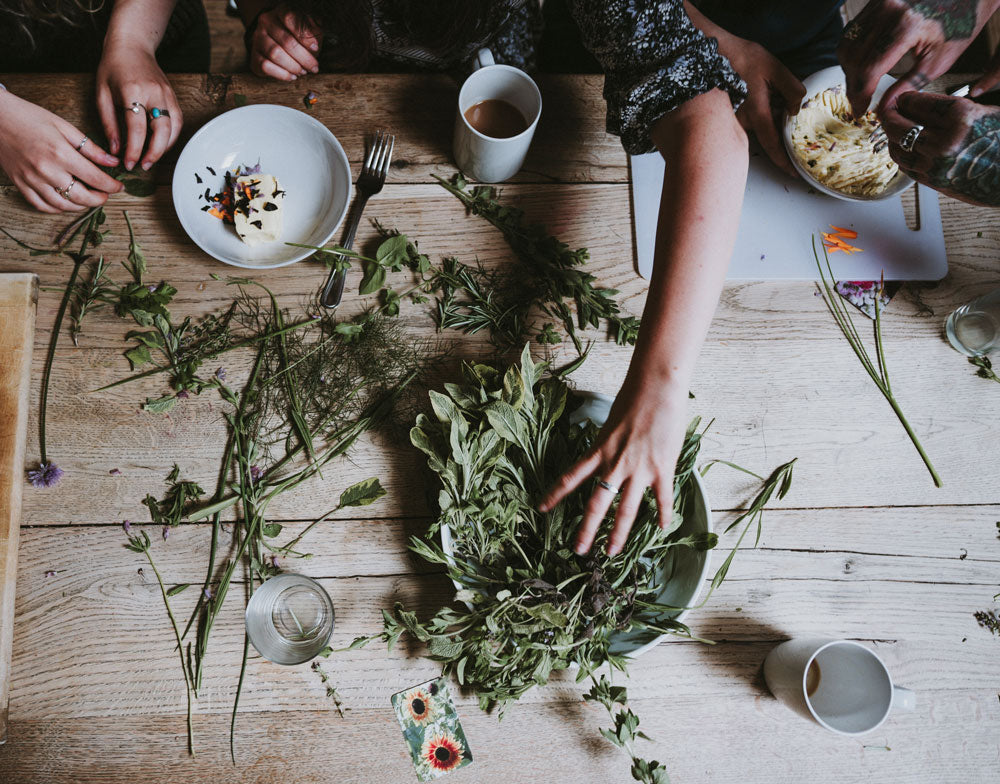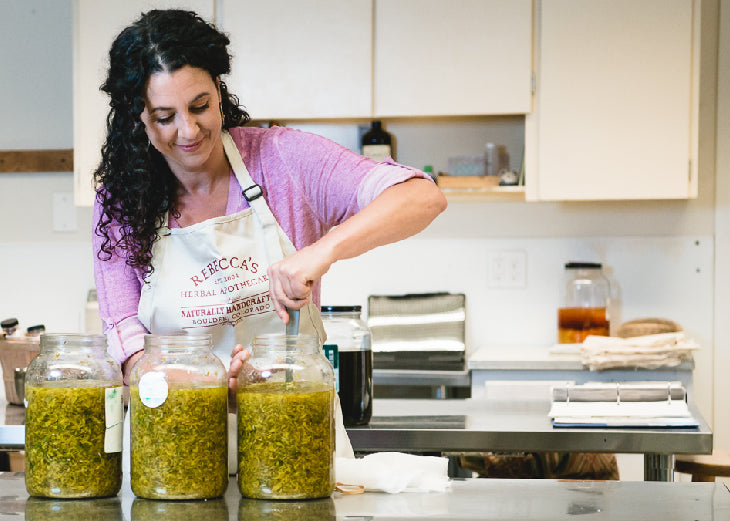Herb Article
Hawthorne
By: Becca Wasserman, Certified Clinical Herbalist

Common Name
Hawthorne
Latin Name
Crataegus spp
Parts Used
Leaf, Flower, & Fruit (berries)
Medicinal Properties
Hawthorne, of which there are many species, varies in shape from wild and shrubby, to wisened and treelike. True to their name, Hawthorne trees typically have characteristic thorns on their branches or trunks. The flowers and leaves are harvested in the spring, and the berries are harvested in the fall. Should one be overcome by herb-lust, the thorns are quick to share the deeply valuable lessons of harvesting with care and respect! Northern European folklore has long associated Hawthorne trees with the fairy realm, regarding them as fairy homes or sacred fairy places that should be respected and left undisturbed in order to avoid bad luck.
In Western Herbalism, Hawthorn is often referred to as a premier cardiotonic—strengthening and balancing to the heart and circulatory system. It has been traditionally used for a wide range of cardiovascular and circulatory issues, including regulating blood pressure, calming nervous heart palpitations, and supporting vascular integrity. Hawthorn is rich in antioxidants, beneficial not only for cardiovascular health but also for immune function and modulating inflammation in the body.
In Traditional Chinese Medicine Hawthorn berries are used for food stagnation—aiding in proper digestion. The sour taste of the berry is said to contract overly-relaxed tissues, normalize digestive secretion, and increase assimilation.
Hawthorn is calming to the nervous system and spirit, and has been used to soothe tension and anxiety. Energetically Hawthorn has a strong protective and magical quality, and is specifically indicated for emotional and spiritual heart-ache and grief. As their thorns indicate, Hawthorn can also be used to help work energetically with boundaries, whether they be too firm or too loose.
Hawthorn is a nutritive and restorative tonic that is most supportive when used long term, 3+ months. Hawthorn is lovely when prepared with all 3 parts combined (berry, leaf, & flower), although the berries or leaves & flowers can also be used alone.
Contraindications & Safety
Hawthorne may interact with heart medications, therefore anyone taking heart medications should consult with their health care practitioner before using Hawthorne.
Preparations & Applications
Hawthorne leaves, flowers and berries can be prepared as tea, tincture, medicinal food and syrup. Tea preparations are as follows: Berries-Gently simmer 1 tablespoon of berries in 1 cup of water for 20-30 minutes. Or steep for 30+ minutes. Leaves & flowers- Infuse 1 tablespoon of leaves & flowers in 1 cup of water for 15-20 minutes. All three- Infuse 1 tablespoon of berries, leaves, & flowers in 1 cup of water for 30+ minutes…OR gently simmer 1-2 teaspoons berries in 1 cup of water for 20 minutes; pour decoction over 1-2 teaspoons of leaves & flowers, steep 15 minutes. Strain and enjoy. Fresh berries can be harvested in fall and eaten as is, or made into preserves/jam. Beware of seeds.
We are so excited to have some incredible local Hawthorn berries in the apothecary right now from our friends at McCauley Family Farm. Come share in their rosy-apple sweetness while they last!
Recipe
The following recipe is a delicious heart tonifying, spiced, aphrodisiac syrup! Add 1-2 tablespoons to warm water or tea, on dessert (ice cream, pie) or in a Hot Toddy on a cold night.
Hawthorne Cacao Elixir
(yields approximately 16 oz. of elixir)
Combine the following ingredients in 2 cups of water:
1 heavy tablespoon Hawthorne berries
½ teaspoon dried Ginger root
½ teaspoon Cinnamon chips
1 Anise Star
1 Clove
1-2 Cardamom pods
Pinch of Orange peel (if desired)
Cover and decoct (a very gentle simmer) until reduced by half, about 30 minutes.
While waiting for your Hawthorn decoction, very gently heat 1 cup of honey in a double boiler or warm water bath until it becomes runny in consistency. Feel free to use a honey that has been previously infused with herbs, or toss in a few slices of raw ginger while it’s gently heating—don’t forget to remove the slices before completing your elixir!
Strain your Hawthorne decoction, remove honey from heat, and combine 1 cup of decoction & 1 cup of honey.
Stir in ¼ cup of Cacao tincture, and a tiny pinch of Cayenne powder (can also be prepared without Cacao tincture). Mix well. Enjoy!
Note: Elixir may separate, be sure to shake well before each use. Best if kept in the fridge, although not necessary. Last about 3-6 months.
Resources
Medicinal Plants of the Mountain West, Michael Moore
Planetary Herbology, Michael Tierra
Making Plant Medicine, Richo Cech




